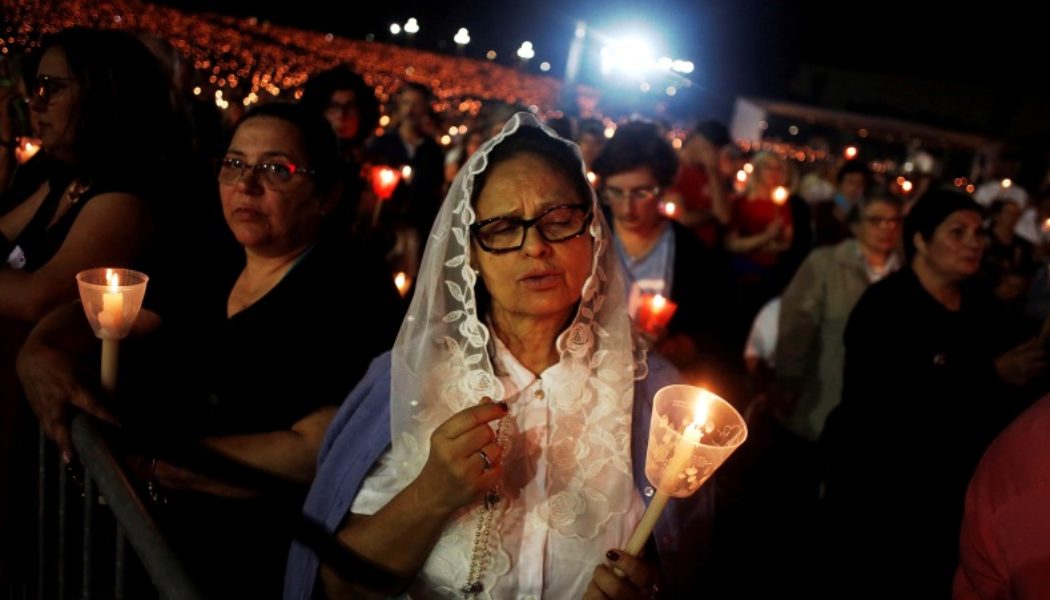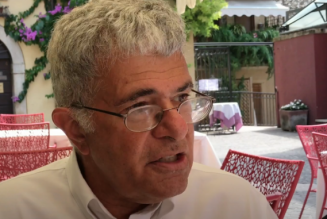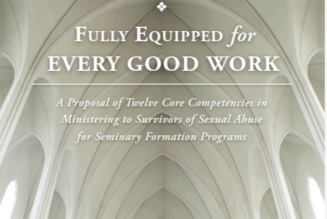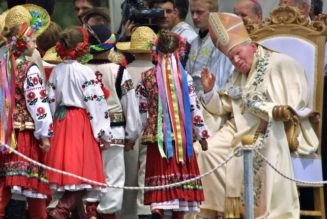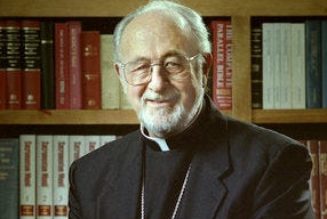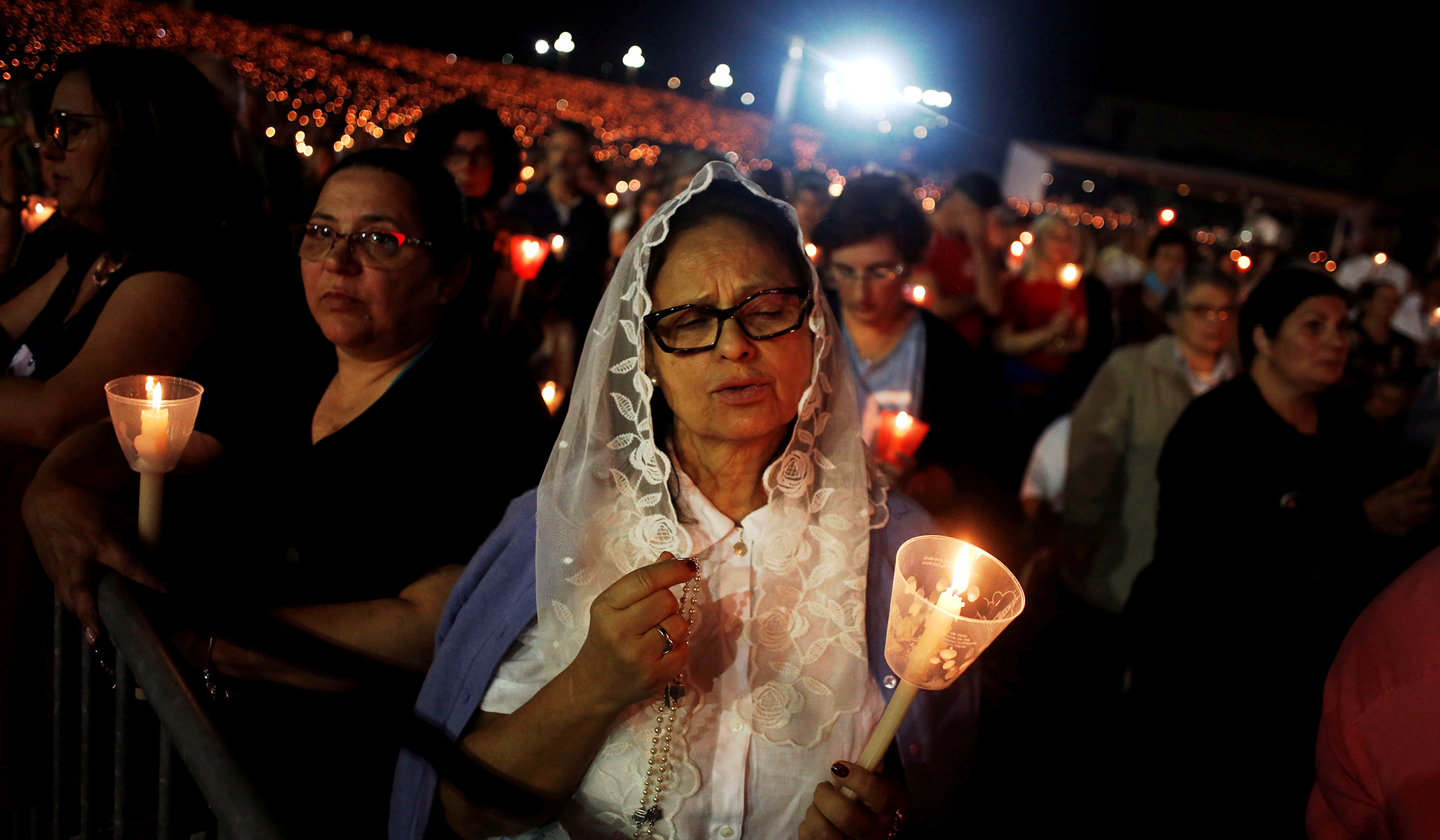
Tomorrow is the solemnity of the Annunciation, March 25. As the Catholic Church commemorates Mary’s assent to conceive and give birth to Jesus, Pope Francis will consecrate Russia and Ukraine to her Immaculate Heart. He has asked all the world’s Catholic bishops to join him and to invite “the priests, religious, and faithful” to do likewise. He will lead the consecration, a prayer of a thousand words, at Saint Peter’s Basilica at approximately 6:30 p.m. (Rome time), after a celebration of penance, the sacrament of confession and forgiveness of sins.
The significance of the consecration is monumental but probably lost on much of the public: For the first time, Mary’s request for the consecration of Russia to her Immaculate Heart will be honored according to her specifications. That’s one take, anyway. It’s based in part on a strict interpretation of the messages that she is reported to have conveyed at Fátima, Portgual, in 1917, on the eve of the Bolshevik Revolution. She’s said to have explained that the aim of the consecration would be the “conversion” of Russia, which would spread its “errors throughout the world” if her words went unheeded.
Sister Lúcia dos Santos, who lived to age 97, is our primary source for the Marian apparitions and communications that she and two others, all of them children at the time, said they received in Cova da Iria, which was a field near Lúcia’s house in Fátima. The site, now a pilgrimage destination featuring hotels, convents, and the Basilica of Our Lady of the Rosary, drew 6.3 million visitors in 2019, the last year before the pandemic; in 2017, the centenary of the Fátima events, 9.4 million.
By the end of the Second World War, a broad warning of which figured in Mary’s messages to the three children a few decades earlier, devotion to Our Lady of Fátima had reached great heights of popularity. It now occupies a prominent and intriguing place in the life of the church. The institutional church considers the Fátima claims “worthy of belief” and approves of prayer and devotion that are informed by them. The faithful are not obligated to accept the Fátima tradition, but few Catholics reject it vocally. Many embrace it with zeal.
One of its attractions is that, unlike scripture, which tells of ancient events full of cultural details that often distract and baffle us, Fátima is of our own time. By the church’s clock, which is slow, 1917 was yesterday. The note of urgency in the words from Our Lady of Fátima is pinned to a history, European but in the end global, whose grand sweep is still in progress. To the believer, to follow Our Lady of Fátima and to ask her for her intercession in international affairs is to influence them.
Pope Pius XII consecrated the world to the Immaculate Heart of Mary on October 31 and December 8, 1942. He invoked Mary as “the Conqueress in God’s battlefields.” Some believers saw heaven’s hand in the British victory against Axis forces at the second battle of El Alamein (northern Egypt) later that year and in a larger momentum shift in favor of the Allied powers. The two consecrations in 1942 included no explicit reference to Russia. Pius then consecrated “the peoples of Russia” and “the whole people of the Russians” to the Immaculate Heart in 1952, in a papal document. None of his three consecrations met Mary’s stipulation that the pope’s consecration be joined by all the world’s bishops.
Pope John Paul II consecrated, or “entrusted,” the world to the Immaculate Heart of Mary on March 25, 1984, in a ceremony in Saint Peter’s Square. He did invite the world’s bishops to join him. He did not, however, specify Russia, although he was widely understood to refer to it when he prayed (in Italian), “In a special way we entrust and consecrate to you [Mary] those individuals and nations that particularly need to be so entrusted and consecrated.”
Asked whether that consecration satisfied Mary’s requirements, Sister Lúcia commented that it was made “in union with those bishops who wished to associate themselves with His Holiness” (my emphasis). Were they all the world’s bishops? She didn’t say, but she concluded that John Paul “made the consecration in the way in which the Blessed Virgin had wished that it should be made.” Five years after it, the Berlin Wall came down, and the Soviet Union was dissolved a couple of years after that. Believers believe.
Since then, we’ve watched Russia relapse into authoritarian dictatorship at home and into military aggression against its neighbors to the west. Last time, it menaced the world from the ideological far left; this time, it does so from the far right. A believer might wonder whether the 1984 consecration was good enough to accomplish a lot, the collapse of the Soviet Union and of communist rule in Eastern Europe, but not to merit Mary’s promise that Russia would be converted.
She didn’t say what Russia would be converted from or to. Observers usually assume that it would be converted from the communism of the Soviet regime. It was.
What Russia would be converted to is harder to say. In the spirit of ecumenism, some Catholics say that the answer is Christianity in the form of the Russian Orthodox Church after a reunification of Moscow with Rome. A different view is that Mary meant that Russians would convert en masse to Catholicism. They haven’t, Rome and Moscow are still not in communion, and most Russians are not publicly practicing Christians of any denomination. Church attendance in Russia is much lower than in the United States and not much higher than in most of Europe.
The ambiguity of the word “converted” in the Fátima messages inclines Russian Orthodox Christians toward suspicion, even hostility. They’re wary of Catholic proselytism. One plausible reason that both Pius and John Paul refrained from naming Russia in their consecrations is that they wished to avoid offending the Russian Orthodox. The tension between the two churches is longstanding and serious.
Sister Vassa Larin, a Russian Orthodox nun and scholar, condemns Moscow’s war on Ukraine and calls Patriarch Kirill’s alignment with the aggressor “horrible, horrible,” but she’s also wary of Francis’s consecration plan. Citing the Catechism of the Catholic Church, she argues that one must consent to one’s consecration for it to be valid. She points out that the Immaculate Heart of Mary reflects a Catholic doctrine, Mary’s exemption from original sin, that Eastern Orthodox Christians don’t share. She adds that Catholic Ukrainian refugees have told her that they disapprove of Francis’s decision to consecrate Ukraine and Russia together when the moment calls for the former to be spared from the latter.
Francis is courting controversy, as is his custom. Devotion to Our Lady of Fátima is especially intense among traditionalist Catholics, many of whom complain that recent popes and liberal bishops have downplayed the warnings and ignored or muddled the instructions that Mary sent through Sister Lúcia. The bad blood between Francis and traditionalists was already thick when last year he restricted celebration of Mass in Latin according to the old missal. You would think that now he has gained sudden redemption in their eyes, as he comes closer than any pope before him to abiding by the letter of Mary’s specs for the consecration of Russia, but expect to hear expressions of mistrust from those who suspect a ruse, a ritual performed with enough care to impress the insufficiently attentive, and with just enough imprecision to render the exercise ineffectual.
Legalism breeds cynicism. Resist both. If the consecration is followed by a break for Ukraine in Russia’s war on it, good.
Join Our Telegram Group : Salvation & Prosperity
